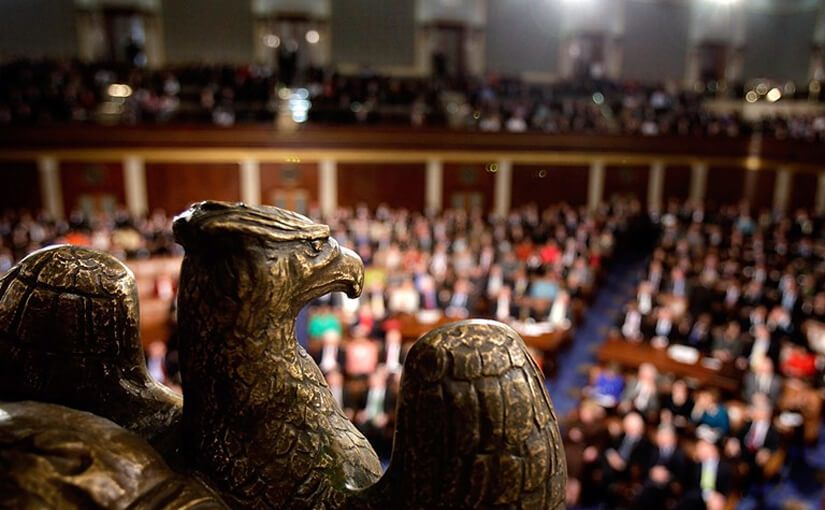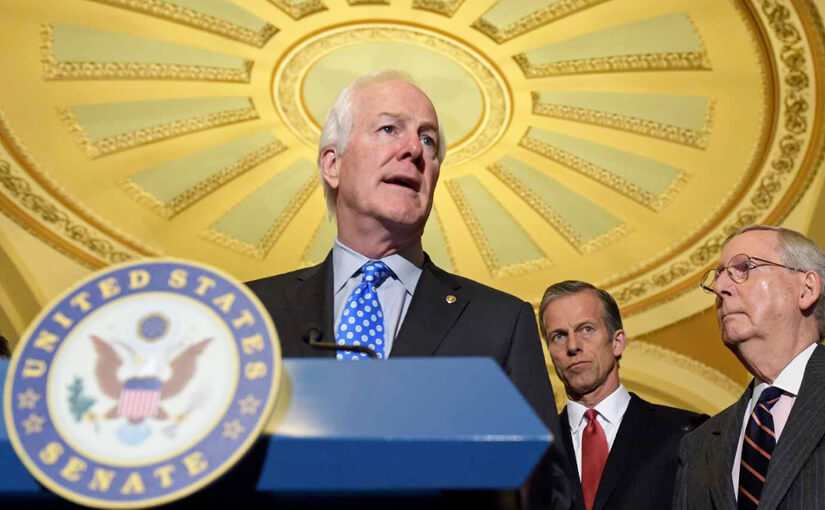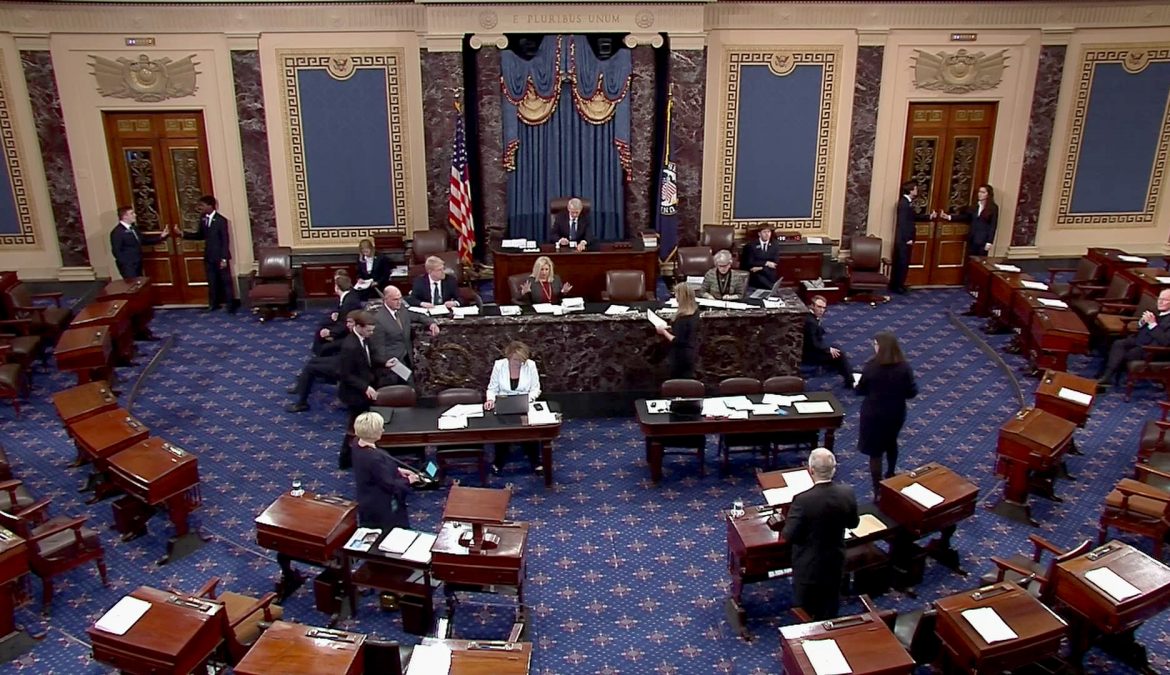-
All people of the state
Senators are elected to serve the people of their state for six years. Each of the two senators represents the entire state.
Before the 17th Amendment to the Constitution was ratified in 1913, the state legislatures elected the U.S. senators to represent their state.
Now, all the voters in a state elect their two U.S. senators directly.
** As you prepare for U.S. citizenship, Learn About the United States: Quick Civics Lessons will help you study for the civics and English portions of the naturalization interview. There are 100 civics (history and government) questions on the naturalization test. During your naturalization interview, you will be asked up to 10 questions from the list of 100 questions. You must answer correctly six (6) of the 10 questions to pass the civics test.
Download PDF
Category: USCIS
22. We elect a U.S. Representative for how many years?
- Two (2)
People who live in a representative’s district are called “constituents.” Representatives tend to reflect the views of their constituents. If representatives do not do this, they may be voted out of office.
The Framers of the Constitution believed that short two-year terms and frequent elections would keep representatives close to their constituents, public opinion, and more aware of local and community concerns.
The Constitution puts no limit on the number of terms a representative may serve. All representatives are up for election every two years.
** As you prepare for U.S. citizenship, Learn About the United States: Quick Civics Lessons will help you study for the civics and English portions of the naturalization interview. There are 100 civics (history and government) questions on the naturalization test. During your naturalization interview, you will be asked up to 10 questions from the list of 100 questions. You must answer correctly six (6) of the 10 questions to pass the civics test.
21. The House of Representatives has how many voting members?
- Four hundred thirty-five (435)
The House of Representatives is the larger chamber of Congress.
Since 1912, the House of Representatives has had 435 voting members. However, the distribution of members among the states has changed over the years.
Each state must have at least one representative in the House.
Beyond that, the number of representatives from each state depends on the population of the state. The Constitution says that the government will conduct a census of the population every 10 years to count the number of people in each state.
The results of the census are used to recalculate the number of representatives each state should have. For example, if one state gains many residents that state could get one or more new representatives. If another state loses residents, that state could lose one or more. But the total number of voting U.S. representatives does not change.
** As you prepare for U.S. citizenship, Learn About the United States: Quick Civics Lessons will help you study for the civics and English portions of the naturalization interview. There are 100 civics (history and government) questions on the naturalization test. During your naturalization interview, you will be asked up to 10 questions from the list of 100 questions. You must answer correctly six (6) of the 10 questions to pass the civics test.
20. Who is one of your state’s U.S. Senators now? *
- Answers will vary. [District of Columbia residents and residents of U.S. territories should answer that D.C. (or the territory where the applicant lives) has no U.S. Senators.]
For a complete list of U.S. senators and the states they represent, go to www.senate.gov.
* If you are 65 or older and have been a permanent resident of the United States for 20 or more years, you may study just the questions marked with an asterisk.
** As you prepare for U.S. citizenship, Learn About the United States: Quick Civics Lessons will help you study for the civics and English portions of the naturalization interview. There are 100 civics (history and government) questions on the naturalization test. During your naturalization interview, you will be asked up to 10 questions from the list of 100 questions. You must answer correctly six (6) of the 10 questions to pass the civics test.
19. We elect a U.S. Senator for how many years?
- Six (6)
The Framers of the Constitution wanted senators to be independent from public opinion. They thought a fairly long, six-year term would give them this protection.
They also wanted longer Senate terms to balance the shorter two-year terms of the members of the House, who would more closely follow public opinion.
The Constitution puts no limit on the number of terms a senator may serve. Elections for U.S. senators take place on even-numbered years.
Every two years, one-third of the senators are up for election.
** As you prepare for U.S. citizenship, Learn About the United States: Quick Civics Lessons will help you study for the civics and English portions of the naturalization interview. There are 100 civics (history and government) questions on the naturalization test. During your naturalization interview, you will be asked up to 10 questions from the list of 100 questions. You must answer correctly six (6) of the 10 questions to pass the civics test.
17. What are the two parts of the U.S. Congress? *
- The Senate and House (of Representatives)
Congress is divided into two parts—the Senate and the House of Representatives. Because it has two “chambers,” the U.S. Congress is known as a “bicameral” legislature.
The system of checks and balances works in Congress. Specific powers are assigned to each of these chambers. For example, only the Senate has the power to reject a treaty signed by the president or a person the president chooses to serve on the Supreme Court.
Only the House of Representatives has the power to introduce a bill that requires Americans to pay taxes.
* If you are 65 or older and have been a permanent resident of the United States for 20 or more years, you may study just the questions marked with an asterisk.
** As you prepare for U.S. citizenship, Learn About the United States: Quick Civics Lessons will help you study for the civics and English portions of the naturalization interview. There are 100 civics (history and government) questions on the naturalization test. During your naturalization interview, you will be asked up to 10 questions from the list of 100 questions. You must answer correctly six (6) of the 10 questions to pass the civics test.
18. How many U.S. Senators are there?
- One hundred (100)
There are 100 senators in Congress, two from each state. All states have equal power in the Senate because each state has the same number of senators.
States with a very small population have the same number of senators as states with very large populations.
The Framers of the Constitution made sure that the Senate would be small. This would keep it more orderly than the larger House of Representatives.
As James Madison wrote in Federalist Paper #63, the Senate should be a “temperate and respectable body of citizens” that operates in a “cool and deliberate” way.
** As you prepare for U.S. citizenship, Learn About the United States: Quick Civics Lessons will help you study for the civics and English portions of the naturalization interview. There are 100 civics (history and government) questions on the naturalization test. During your naturalization interview, you will be asked up to 10 questions from the list of 100 questions. You must answer correctly six (6) of the 10 questions to pass the civics test.
16. Who makes federal laws?
- Congress
- Senate and House (of Representatives)
- (U.S. or national) legislature
Congress makes federal laws. A federal law usually applies to all states and all people in the United States. Either side of Congress—the Senate or the House of Representatives—can propose a bill to address an issue. When the Senate proposes a bill, it sends the bill to a Senate committee. The Senate committee studies the issue and the bill. When the House of Representatives proposes a bill, it sends the bill to a House of Representatives committee.
The committee studies the bill and sometimes makes changes to it. Then the bill goes to the full House or Senate for consideration. When each chamber passes its own version of the bill, it often goes to a “conference committee.” The conference committee has members from both the House and the Senate. This committee discusses the bill, tries to resolve the differences, and writes a report with the final version of the bill.
Then the committee sends the final version of the bill back to both houses for approval. If both houses approve the bill, it is considered “enrolled.” An enrolled bill goes to the president to be signed into law. If the president signs the bill, it becomes a federal law.
** As you prepare for U.S. citizenship, Learn About the United States: Quick Civics Lessons will help you study for the civics and English portions of the naturalization interview. There are 100 civics (history and government) questions on the naturalization test. During your naturalization interview, you will be asked up to 10 questions from the list of 100 questions. You must answer correctly six (6) of the 10 questions to pass the civics test.
15. Who is in charge of the executive branch?
- The President
The job of the executive branch is to carry out, or execute, federal laws and enforce laws passed by Congress. The head of the executive branch is the president.
The president is both the head of state and the head of government.
The president’s powers include the ability to sign treaties with other countries and to select ambassadors to represent the United States around the world.
The president also sets national policies and proposes laws to Congress.
The president names the top leaders of the federal departments. When there is a vacancy on the Supreme Court, the president names a new member. However, the Senate has the power to reject the president’s choices. This limit on the power of the president is an example of checks and balances.
** As you prepare for U.S. citizenship, Learn About the United States: Quick Civics Lessons will help you study for the civics and English portions of the naturalization interview. There are 100 civics (history and government) questions on the naturalization test. During your naturalization interview, you will be asked up to 10 questions from the list of 100 questions. You must answer correctly six (6) of the 10 questions to pass the civics test.
14. What stops one branch of government from becoming too powerful?
- Checks and balances
- Separation of powers
The Constitution separates the government’s power into three branches to prevent one person or group from having too much power.
The separation of government into three branches creates a system of checks and balances. This means that each branch can block, or threaten to block, the actions of the other branches. Here are some examples: the Senate (part of the legislative branch) can block a treaty signed by the president (the executive branch). In this example, the legislative branch is “checking” the executive.
The U.S. Supreme Court (the judicial branch) can reject a law passed by Congress (the legislative branch). In this example, the judicial branch is “checking” the legislative branch.
This separation of powers limits the power of the government and prevents the government from violating the rights of the people.
** As you prepare for U.S. citizenship, Learn About the United States: Quick Civics Lessons will help you study for the civics and English portions of the naturalization interview. There are 100 civics (history and government) questions on the naturalization test. During your naturalization interview, you will be asked up to 10 questions from the list of 100 questions. You must answer correctly six (6) of the 10 questions to pass the civics test.











